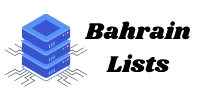Lead generation isn’t a one-time setup. It requires constant refinement. Stagnation leads to diminishing returns. Markets change, and so do customers. Competitors evolve their strategies. Continuous improvement is essential. It ensures sustained growth. It maximizes return on investment. This process is iterative. It involves constant learning.
The Importance of an Iterative Process.
Treat lead generation as a loop. Plan, execute, measure, and adjust. Each cycle refines your approach. This isn’t about perfection. It’s about email data ongoing optimization. Small, consistent changes add up. Avoid large, infrequent overhauls. Iteration allows agility. You adapt quickly to changes. It minimizes risk of failure.
Key Areas for Continuous Improvement.
Review your lead sources regularly. Are some performing better? Optimize underperforming channels. Revisit your targeting is it legal to use arabic mobile databases? criteria. Is your ideal customer profile accurate? Are your ad creatives fresh? Test new headlines and images. Update your lead magnet offers. Are they still compelling and relevant? Streamline your conversion funnels. Reduce friction points wherever possible.
Monitoring Performance Metrics.
Establish clear KPIs for lead generation. Track conversion rates religiously. Monitor cost per lead (CPL). Analyze lead quality and close rates. Understand source performance breakdowns. Use CRM and analytics tools. Dashboards provide a quick overview. Regular reports highlight trends. Data guides your decisions. Without metrics, you’re blind.
Gathering Feedback.
Feedback is invaluable for improvement. Ask your sales team for input. What challenges do they face? Are leads qualified and aero leads ready? Conduct surveys with new leads. Understand their journey and expectations. Analyze reasons for non-conversion. What made prospects drop off? User experience feedback is vital. Use surveys or heatmaps.
Adapting to Market Changes.
The digital landscape is dynamic. New platforms emerge constantly. Consumer behavior shifts over time. Algorithms are frequently updated. Stay informed about industry trends. Monitor competitor activities closely. Be prepared to pivot strategies. Agility is key to survival. Continuous learning is non-negotiable. It keeps you competitive.
Cultivating a Culture of Optimization.
Encourage experimentation within your team. Foster a data-driven mindset. Celebrate small wins from optimization. Share lessons learned transparently. Document processes for consistency. Build a library of best practices. Continuous improvement is a team effort. It ensures sustainable lead growth. Make optimization a core value.
